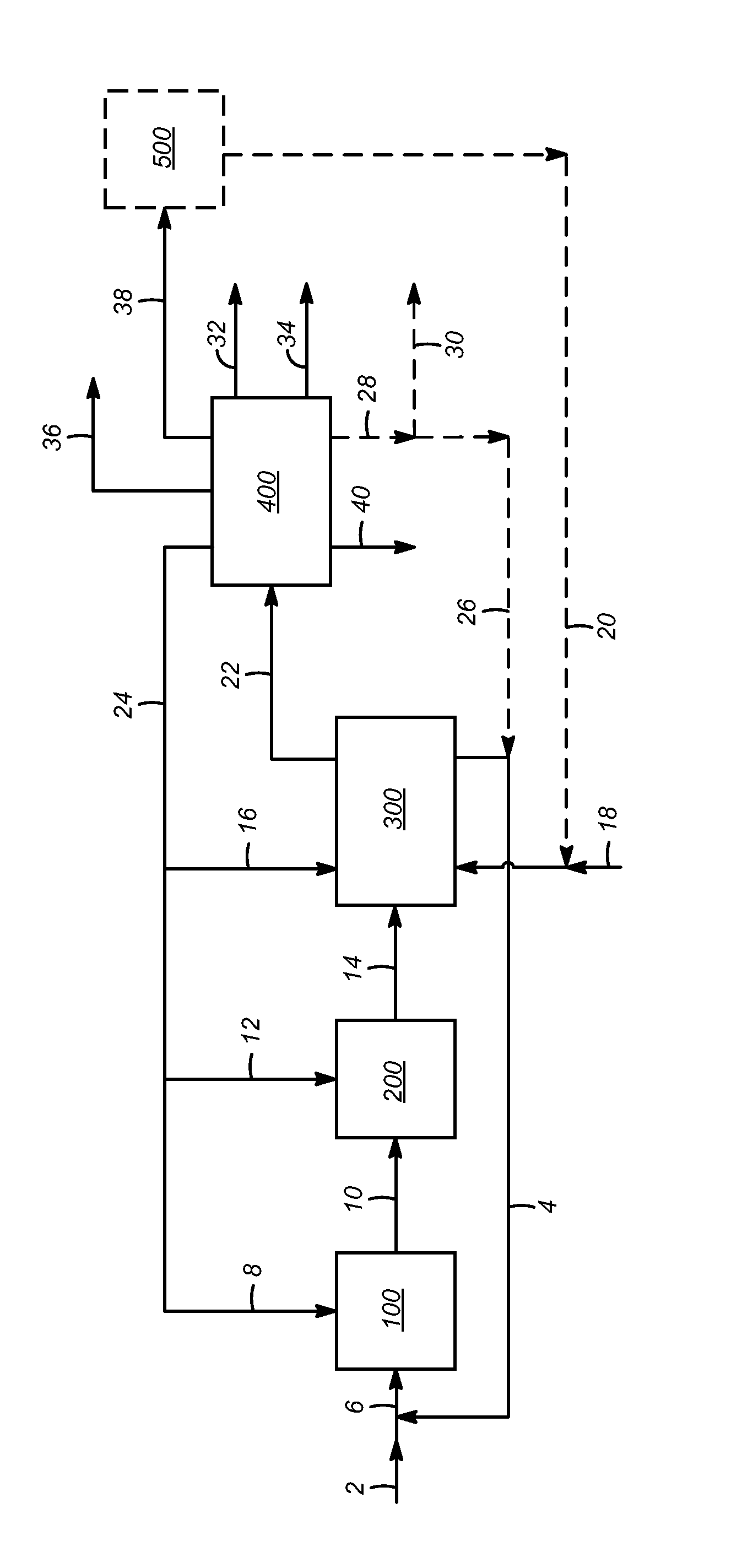Hydroprocessing of fats, oils, and waxes to produce low carbon footprint distillate fuels
a technology of distillate fuel and fat, which is applied in the direction of fuels, sustainable manufacturing/processing, fuels, etc., can solve the problems of f-t synthesis, generally of significantly lower quality, and less favorable products of biomass to liquid (btl) pathways, so as to reduce greenhouse gas emissions
- Summary
- Abstract
- Description
- Claims
- Application Information
AI Technical Summary
Benefits of technology
Problems solved by technology
Method used
Image
Examples
example
[0068]A pilot plant scale operation was used to evaluate the hydroprocessing of a commercial soybean oil feed to provide hydroprocessed biofuels. The flowscheme, as described above, included first and second reactors, namely hydrodeoxygenation and hydrocracking / hydroisomerization reactors in series and a hot hydrogen stripper to separate the effluent from the second reactor. In particular, the hot hydrogen stripper provided an overhead fraction that was further processed for (i) separation of recycle hydrogen by flashing and scrubbing (for CO2 removal) and (ii) resolution of hydrocarbon fractions boiling in representative ranges for naphtha [C5-132° C. (270° F.)], jet fuel or SPK [132° C. (270° F.)-279° C. (535° F.)], and diesel fuel [279° C. (535° F.) and heavier]. The bottoms fraction from the hot hydrogen stripper was recycled back to combine with the feed, at an approximately 5:1 combined feed ratio by weight.
[0069]The catalysts used in the first and second reactors, both having...
PUM
| Property | Measurement | Unit |
|---|---|---|
| temperatures | aaaaa | aaaaa |
| absolute pressures | aaaaa | aaaaa |
| absolute pressures | aaaaa | aaaaa |
Abstract
Description
Claims
Application Information
 Login to View More
Login to View More - R&D
- Intellectual Property
- Life Sciences
- Materials
- Tech Scout
- Unparalleled Data Quality
- Higher Quality Content
- 60% Fewer Hallucinations
Browse by: Latest US Patents, China's latest patents, Technical Efficacy Thesaurus, Application Domain, Technology Topic, Popular Technical Reports.
© 2025 PatSnap. All rights reserved.Legal|Privacy policy|Modern Slavery Act Transparency Statement|Sitemap|About US| Contact US: help@patsnap.com

